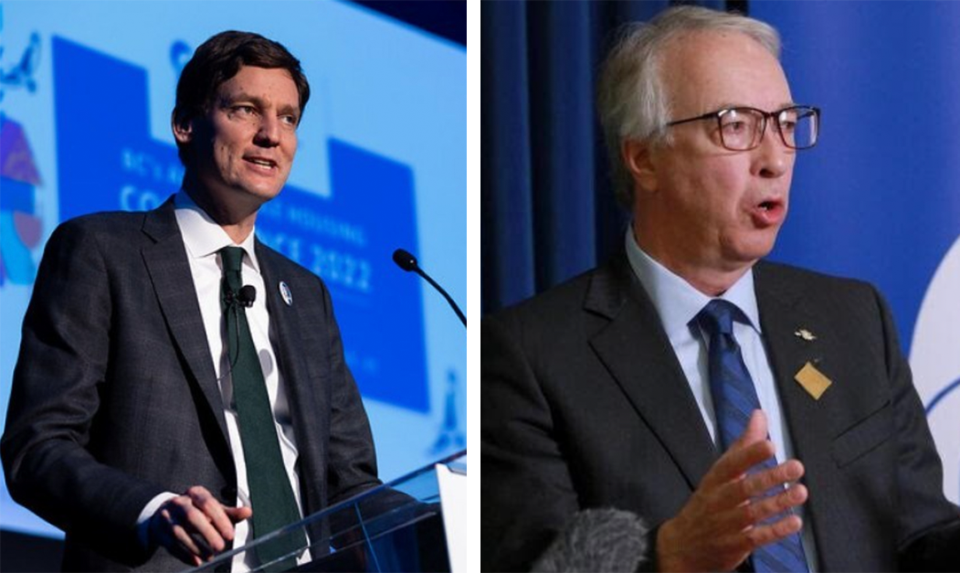With just two weeks to go before election day in British Columbia, the race remains considerably tight. The governing BC NDP and the Conservative Party of BC are separated by a single point among decided voters (45 per cent to 44 per cent), with the BC Green Party at nine per cent.
The provincewide fluctuations are not significant when compared to our previous look at the electorate . The BC NDP keeps the upper hand in Metro Vancouver (44 per cent) and Vancouver Island (42 per cent), while the BC Conservatives remain ahead in the Fraser Valley (48 per cent), Southern BC (47 per cent) and Northern B.C. (also 47 per cent).
The electoral system provides an advantage to the incumbent New Democrats, who are leading in regions that elect 58 members to the legislative assembly: 43 in Metro Vancouver and 15 in Vancouver Island. The BC Conservatives may enjoy large victories in the remaining areas of the province, but have fewer seats to secure: 15 in Southern B.C., 10 in Northern B.C. and another 10 in the Fraser Valley.
The voting intention question outlines how imperfect the desired coalescing of BC United into the BC Conservatives has been. While 61 per cent of likely voters who supported the BC Liberals under Andrew Wilkinson in the 2020 provincial ballot are now behind the BC Conservatives, 32 per cent say they will vote for the BC NDP. Optimists will indubitably point to the two-to-one margin favouring the BC Conservatives among those who stood by the weakest leader in the history of the former ruling party. Still, three in 10 voters are not currently heeding the advice of BC United leader Kevin Falcon. If a proper merger had been established, with a more careful selection of candidates, the election would not be as close as it is.
The early stages of the campaign have focused primarily on polarization. The two main parties have sought to connect with their base of support with tried and tested playbooks. This has resulted in a poor momentum score for the two leaders. Three in ten likely voters (30 per cent) tell us that their opinion of BC Conservative leader John Rustad has worsened since the start of the campaign, and just under one in four (24 per cent) feel the same way about Premier and BC NDP leader David Eby.
The approval rating for the three leaders remains relatively stable: 52 per cent for Eby (up one point), 45 per cent for Rustad (down three points) and 42 per cent for BC Green leader Sonia Furstenau (up one point). On the “best premier” question, Eby is still in first place with 40 per cent (up four points), followed by Rustad (32 per cent, up five points) and Furstenau (12 per cent, unchanged).
These results are significantly different from what we saw at this point in the . Premier and BC NDP leader John Horgan’s approval rating stood at 65 per cent, and he had a sizable lead over Wilkinson as “Best Premier” (47 per cent to 27 per cent).
The “best premier” question is a crucial barometer to tell apart window-shoppers dissatisfied with the status quo and voters who have established an emotional connection with an opposition leader. Previous provincial ballots outline this fact. In the final stages of the , eventual winner François Legault was comfortably ahead of incumbent Phillipe Couillard (30 per cent to 23 per cent). In the , the lead was similar for Wab Kinew over Heather Stefanson (38 per cent to 30 per cent).
In the , Danielle Smith—who, like Eby, was leading a governing party for the first time—was barely ahead of Rachel Notley (43 per cent to 41 per cent). At this point, Rustad still trails Eby when British Columbians ponder the best person for the top political job in the province, even if his position on some issues is starting to resonate.
Eby is still preferred over Rustad on issues where BC NDP leaders in this century have been dominant: Housing, homelessness and poverty (38 per cent to 31 per cent), health care (42 per cent to 27 per cent) and education (39 per cent to 26 per cent). Rustad leads Eby on dealing with crime and public safety (38 per cent to 32 per cent) and the two are tied a 35 per cent on managing the province’s finances.
Right now, nine per cent of likely voters in British Columbia are undecided—a proportion that rises slightly to 12 per cent among women and to 10 per cent among those aged 55 and over. In addition, 17 per cent of likely voters cannot choose any of the three main party leaders as the “best premier.”
Those who have not made up their minds are expecting something more powerful from parties. While Eby is five points behind Horgan’s pace on “best premier,” his approval rating is 13 points lower. Oddly enough, Eby is in a similar position to Christy Clark in 2013. Some voters may not like what has been achieved under his tenure, but he is still regarded as the safer choice by voters aged 55 and over.
Rustad needs to climb the ladder on personal numbers and “best premier.” He may be able to seal the deal if he achieves the same success on housing and finances that he has obtained on public safety. The next two weeks, with platforms and proposals in place, will define if voters are indeed ready for a change of government.
Mario Canseco is president of Research Co.
Results are based on an online survey conducted from September 30 to October 2, 2024, among a representative sample of 801 likely voters in British Columbia. The data has been statistically weighted according to Canadian census figures for age, gender and region in British Columbia. The margin of error—which measures sample variability—is plus or minus 3.5 percentage points, 19 times out of 20.




